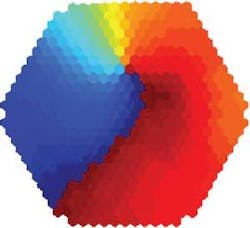NSM vibration isolation critical to neuronal measurement

When air tables, stacked air tables, and active electronic vibration-isolation systems failed to reduce vibrations to a level allowing measurement of neuronal brain activity for researchers at Georgetown University Medical Center (Washington, D.C.), professor Jian-Young Wu and colleagues were able to implement a negative-stiffness vibration-isolation system from Minus K Technology (Inglewood, CA) to isolate vibrations down to the required level of 1 Hz.
Wu’s team uses voltage-sensitive dye imaging that visualizes patterns in the brain’s cortex. Neocortical columns—containing as many as 60,000 neurons—correspond to a sensory stimulus input to the human body. When imaged in motion, patterns such as spiraling waves can be seen during epileptic seizures and in the heart during cardiac fibrillation, shedding light on the relationship of brain patterns to trauma and disease. Because voltage-sensitive dye signals are small (typically a 0.1% to 1.0% change in illumination intensity), extreme vibration isolation is required to exclude external vibrations from air conditioning or ambulatory movement of lab personnel, insuring that only the neuronal fluctuations are imaged. Contact David Platus at [email protected].

Gail Overton | Senior Editor (2004-2020)
Gail has more than 30 years of engineering, marketing, product management, and editorial experience in the photonics and optical communications industry. Before joining the staff at Laser Focus World in 2004, she held many product management and product marketing roles in the fiber-optics industry, most notably at Hughes (El Segundo, CA), GTE Labs (Waltham, MA), Corning (Corning, NY), Photon Kinetics (Beaverton, OR), and Newport Corporation (Irvine, CA). During her marketing career, Gail published articles in WDM Solutions and Sensors magazine and traveled internationally to conduct product and sales training. Gail received her BS degree in physics, with an emphasis in optics, from San Diego State University in San Diego, CA in May 1986.